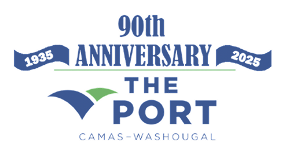Our Financial Report
Property taxes received by the Port go directly towards new capital projects and paying down outstanding bond debt.
All Port operations (Industrial Park, Airport, Marina and Parks Administration) are funded by operating revenues.
Property taxes are not used to support Port operations.
Financial Key Data to Highlight
Visiting Boaters
Business Tenants
Land Lease
The Port produces over 6 jobs for each acre of land it leases.
Port Buildings
Parks & Trails
Tax Dollars
The Port collects $2.74 million in property tax annually and receives approximately 3 cents from each dollar in property tax paid by Port constituents.
Port Districts as Municipal Corporations
Technically, port districts are “municipal corporations” of the state (RCW 53.04.060), but they differ from other municipal corporations (such as cities and counties) in that they are “special purpose districts,” rather than general purpose governments. Plus, Washington’s public ports differ from other special purpose districts (such as water and fire protection) in that they have broader powers.
Port Finance
Port activities and functions are financed in a variety of ways. These include lease-rental fees, other charges for services and the use of land and other facilities; property tax levies; proceeds from bonds sold for capital project construction; and grants and gifts.
